Growing Asplenium
rutifolium indoors
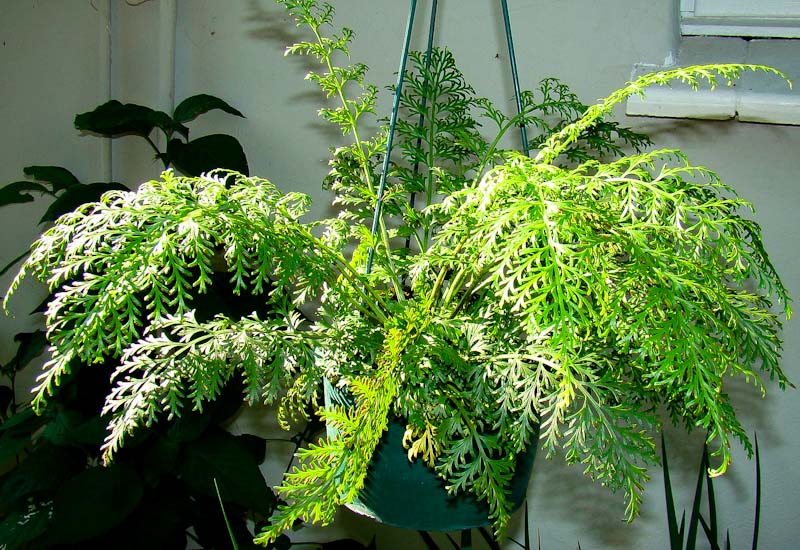
Asplenium is a genus of about 700
species of ferns, often treated as the only genus in the family
Aspleniaceae
Habitat
Asplenium rutifolium is to be found growing on trees as epiphytes or on rocks as lithophytes and very occasionally as a terristrial in deeply shaded moist evergreen forest.
Distribution in South Africa
Eastern Cape, KwaZulu-Natal, Limpopo, Mpumalanga, Western Cape
Distribution worldwide
The native range of this species is in Africa from South Africa, Swaziland, Zimbabwe, Malawi, Rwanda, Uganda, Mozambique, Tanzania, Kenya, Yemen as well as the islands of Comoros, Madagascar, Mauritius and Réunion.
Cultivation
The carrot fern, Asplenium rutifolium is attractive and very easy to grow and most certainly needs to be popularised as a house plant here in South Africa, Asplenium rutifolium grow well indoors preferably under relatively high light conditions, however they do not tolerate full sun conditions for long without burning.
From experience I have found that Asplenium rutifolium grow in any well drained growing medium that has a high organic component. My plants are presently growing well in a mixture of coco fiber chips, orchid bark with a little added charcoal, coarse well rotted leaf mould and perlite can also be added to the growing medium.
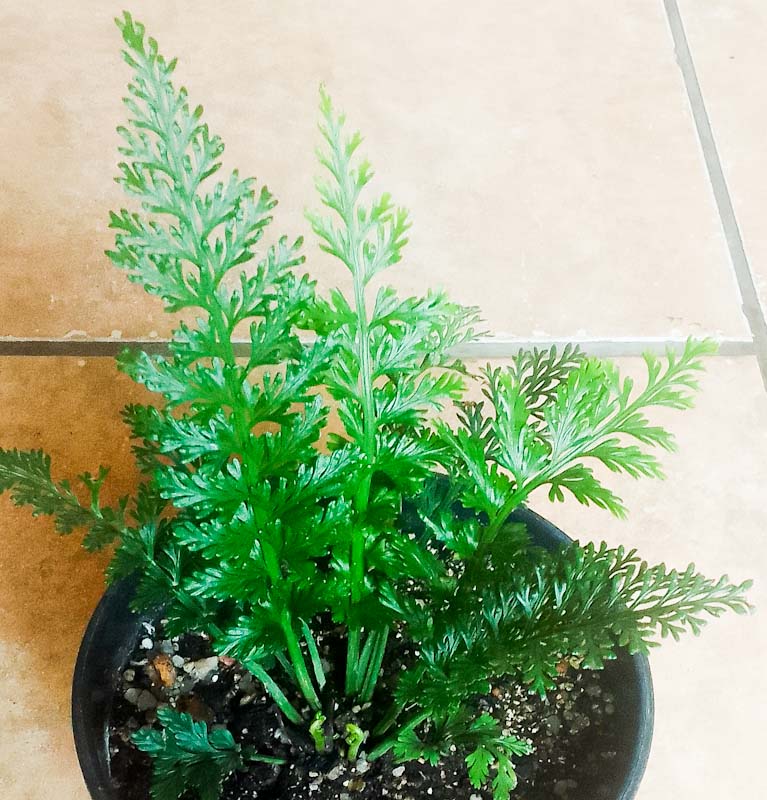
Here is a more upright growing form of Asplenium rutifolium that was found growing as a lithophyte
Watering
I mist my plants daily and water heavily about once per week to flush out the growing medium.
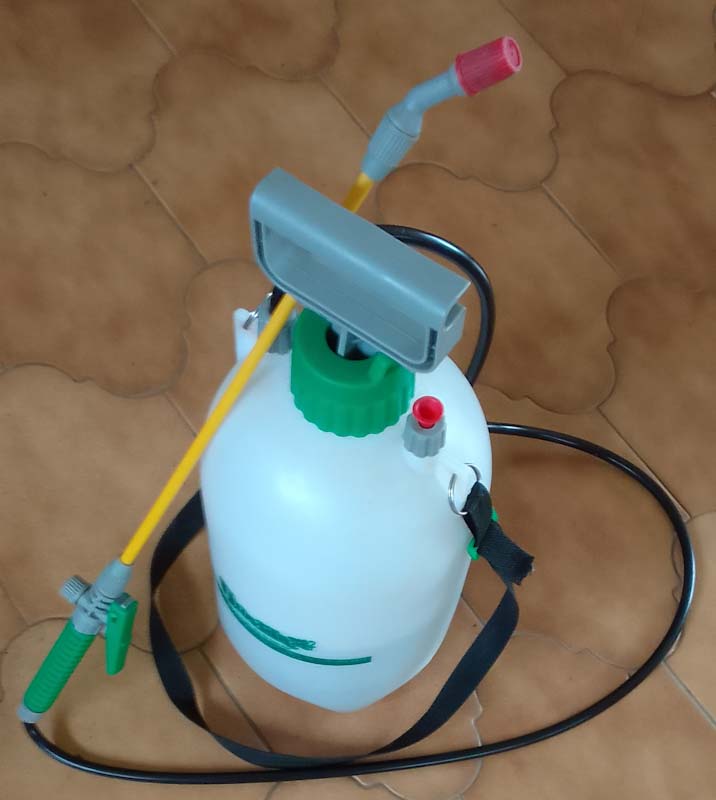
Fertilizing
I feed frequently using a very dilute amount of a variety of plant feeds such as
EasyGro™ Flower and Fruit
is a 3:1:6(46) water soluble fertilizer, high in concentrations of Potassium ideally suitable for crops during the flowering and fruiting stages.
SEAGRO™ Bio-Fertiliser
Bionutrient with Enhanced Amino Acids. A fish emulsion rich in micro & macro elements and 17 amino acids. Seagro is used as organic fertilizer in agricultural practices for maintenance of crop health. Seagro has a remarkable impact on crop quality as well as yield through the activation of key metabolic processes. Seagro serves not only as a nutrition and stress reliever, but also plays an important role in the vitality of the microbial population in the soil.
Nitrosol Original Biological Fertiliser
is the original formulation developed by Dr. Peter Kauzal, a veterinary surgeon, from ruminant blood and bone. Nitrosol Original has a balanced NPK of 11.5.7 plus trace elements and minerals and recommended for use in all horticultural crops and home garden.
Fulvic acid.
Fulvic acid is group of chemicals formed when plants and animals break down. It is found in the humus (organic matter) part of soil and peat, and is also found in streams and lakes.
Fulvic acid benefits of increases root respiration and formation,enhance plant growth and yield. Humic fulvic acid can enhances pH buffering capacity, enhances photosynthesis and respiration, increases cationic exchange.
Brings about an improvement in the transport of nutrients, making them available in the areas of need. Increases the synthesis of proteins and nucleic acids, which will facilitate the action of enzymes formed with some amino acids and micro-nutrients.
Tea
I also feed and mist regularly with a week solution of both black tea and rooibos tea which appears to be very beneficial to both my ferns as well as my orchid plants.
Propagation
Asplenium rutifolium propagates very easily from spores if one has the patience to wait a few years for a good sized mature plant becasue they are slow growers, the plus factor is that one can easily propagate large numbers of new plants.
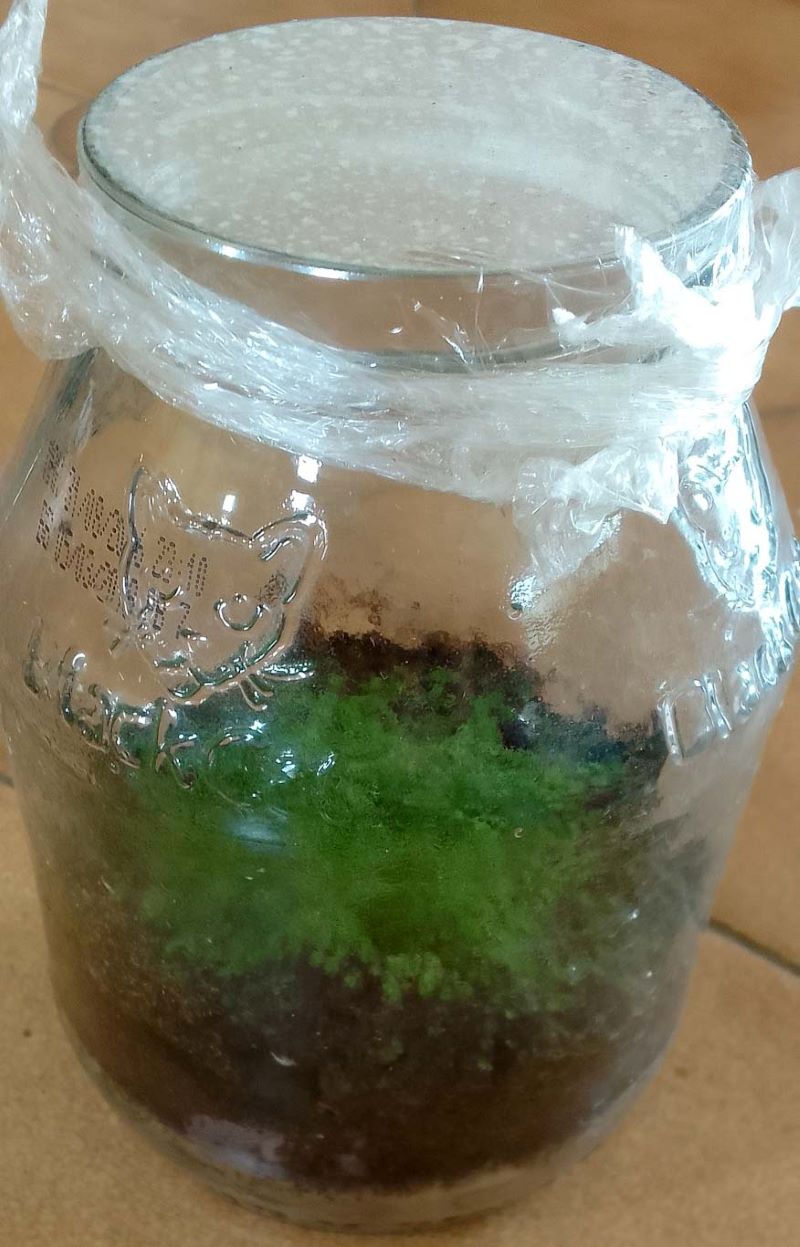
The method that I use is to grow my fern spore in is to obtain a large glass jar into which I place a layer of small crushed stone topped with a thin layer of silica sand used for swimming pool filters. Over this layer, in this example above I have placed a thin layer of sphagnum peat onto which I sprinkle the ripe spore.
To water I use a small insecticide spray bottle watering enough that
the water creates a small reservoir of water approximately half way up
the crushed stone. I then cover the jar with a piece of cling wrap that
can be fastened by an elastic band of piece of string and place the jar
in an area of bright light that does not receive any direct sunlight or
under lights giving around 5,000 lux for between 12 -14 hours per day.
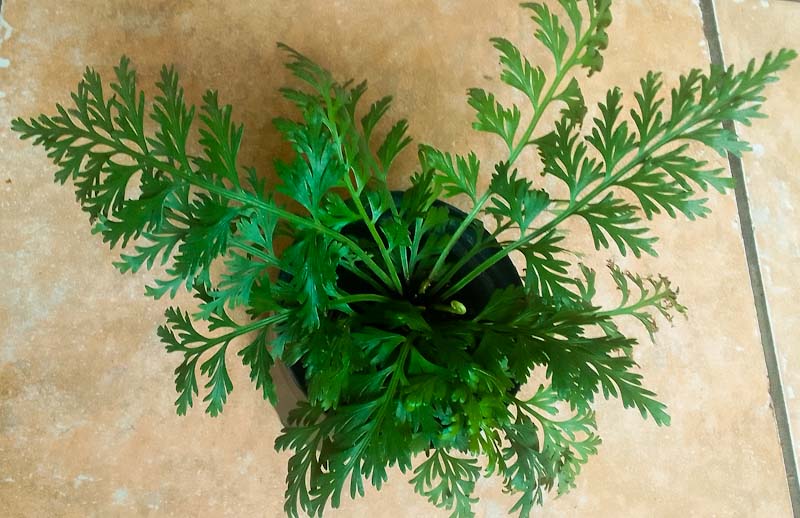
When the young Asplenium rutifolium ferns are large enough they are planted out into very small pots in chunks of coco fibre and placed in a humid cool place away from direct sunlight.
Asplenium rutifolium is to be found growing on trees as epiphytes or on rocks as lithophytes and very occasionally as a terristrial in deeply shaded moist evergreen forest.
Distribution in South Africa
Eastern Cape, KwaZulu-Natal, Limpopo, Mpumalanga, Western Cape
Distribution worldwide
The native range of this species is in Africa from South Africa, Swaziland, Zimbabwe, Malawi, Rwanda, Uganda, Mozambique, Tanzania, Kenya, Yemen as well as the islands of Comoros, Madagascar, Mauritius and Réunion.
Cultivation
The carrot fern, Asplenium rutifolium is attractive and very easy to grow and most certainly needs to be popularised as a house plant here in South Africa, Asplenium rutifolium grow well indoors preferably under relatively high light conditions, however they do not tolerate full sun conditions for long without burning.
From experience I have found that Asplenium rutifolium grow in any well drained growing medium that has a high organic component. My plants are presently growing well in a mixture of coco fiber chips, orchid bark with a little added charcoal, coarse well rotted leaf mould and perlite can also be added to the growing medium.

Here is a more upright growing form of Asplenium rutifolium that was found growing as a lithophyte
I mist my plants daily and water heavily about once per week to flush out the growing medium.

Fertilizing
I feed frequently using a very dilute amount of a variety of plant feeds such as
EasyGro™ Flower and Fruit
is a 3:1:6(46) water soluble fertilizer, high in concentrations of Potassium ideally suitable for crops during the flowering and fruiting stages.
SEAGRO™ Bio-Fertiliser
Bionutrient with Enhanced Amino Acids. A fish emulsion rich in micro & macro elements and 17 amino acids. Seagro is used as organic fertilizer in agricultural practices for maintenance of crop health. Seagro has a remarkable impact on crop quality as well as yield through the activation of key metabolic processes. Seagro serves not only as a nutrition and stress reliever, but also plays an important role in the vitality of the microbial population in the soil.
Nitrosol Original Biological Fertiliser
is the original formulation developed by Dr. Peter Kauzal, a veterinary surgeon, from ruminant blood and bone. Nitrosol Original has a balanced NPK of 11.5.7 plus trace elements and minerals and recommended for use in all horticultural crops and home garden.
Fulvic acid.
Fulvic acid is group of chemicals formed when plants and animals break down. It is found in the humus (organic matter) part of soil and peat, and is also found in streams and lakes.
Fulvic acid benefits of increases root respiration and formation,enhance plant growth and yield. Humic fulvic acid can enhances pH buffering capacity, enhances photosynthesis and respiration, increases cationic exchange.
Brings about an improvement in the transport of nutrients, making them available in the areas of need. Increases the synthesis of proteins and nucleic acids, which will facilitate the action of enzymes formed with some amino acids and micro-nutrients.
Tea
I also feed and mist regularly with a week solution of both black tea and rooibos tea which appears to be very beneficial to both my ferns as well as my orchid plants.
Propagation
Asplenium rutifolium propagates very easily from spores if one has the patience to wait a few years for a good sized mature plant becasue they are slow growers, the plus factor is that one can easily propagate large numbers of new plants.

The method that I use is to grow my fern spore in is to obtain a large glass jar into which I place a layer of small crushed stone topped with a thin layer of silica sand used for swimming pool filters. Over this layer, in this example above I have placed a thin layer of sphagnum peat onto which I sprinkle the ripe spore.

When the young Asplenium rutifolium ferns are large enough they are planted out into very small pots in chunks of coco fibre and placed in a humid cool place away from direct sunlight.
Pest control
To date I have not encountered
pests on my plants however I treat them on a regular basis As I do with
my other indoor plants as a precaution because other Asplenium species
that I grow are prone to soft scale and mealy bug attack. In the past
I sprayed my plants which entailed the use of spray overalls, googles
and respirator which was a major task and was both hazardous to my
health as well as made the entire house stink for a day or two.
Furthermore, this process needed to be repeated on a regular basis. I
now use a granular Insecticide with great success and no fuss at all.
The product that I use is, Efekto
Granules Plus active ingredient Imidacloprid (chloro-nicotinyl)
which I apply to the roots and is taken up by the roots and evenly
distributed to the entire plant which is highly effective against most
sucking insects and provides long term control between 4 – 8
weeks.
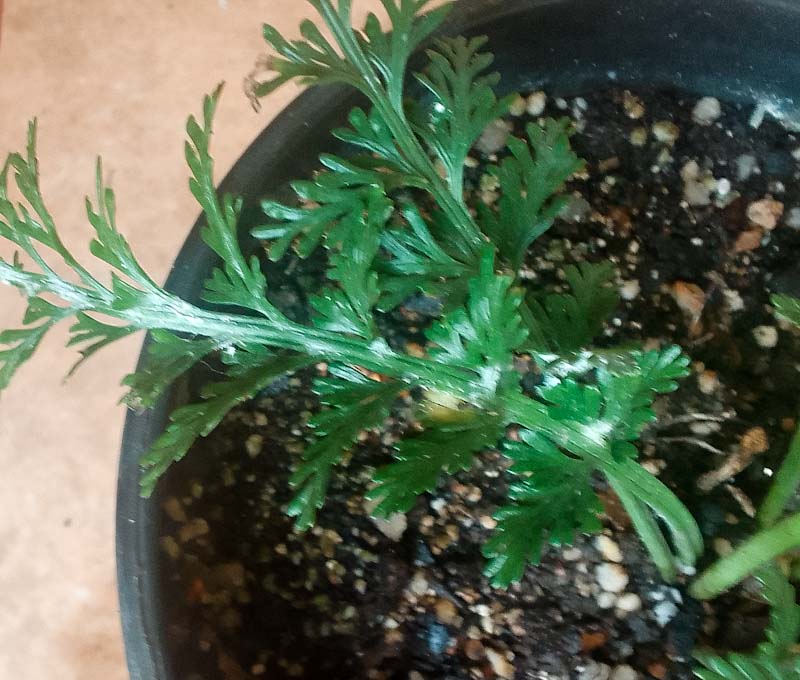
Asplenium rutifolium that has a mealy bug infestation that went unnoticed

Asplenium rutifolium that has a mealy bug infestation that went unnoticed
| Home |
Contact | |
| Green Roof |
Rehabilitation |
|
| Landscaping |
Weed |
|
 |
 |